- Home
- Clarice Lispector
The Complete Stories
The Complete Stories Read online
ALSO BY CLARICE LISPECTOR
AVAILABLE FROM NEW DIRECTIONS
Água Viva
A Breath of Life
The Foreign Legion
The Hour of the Star
Near to the Wild Heart
The Passion According to G. H.
Selected Crônicas
Soulstorm
Contents
Glamour and Grammar by Benjamin Moser
FIRST STORIES
The Triumph
Obsession
The Fever Dream
Jimmy and I
Interrupted Story
The Escape
Excerpt
Letters to Hermengardo
Gertrudes Asks for Advice
Another Couple of Drunks
FAMILY TIES
Daydream and Drunkenness of a Young Lady
Love
A Chicken
The Imitation of the Rose
Happy Birthday
The Smallest Woman in the World
The Dinner
Preciousness
Family Ties
Beginnings of a Fortune
Mystery in São Cristóvão
The Crime of the Mathematics Teacher
The Buffalo
THE FOREIGN LEGION
The Disasters of Sofia
The Sharing of Loaves
The Message
Monkeys
The Egg and the Chicken
Temptation
Journey to Petrópolis
The Solution
Evolution of a Myopia
The Fifth Story
A Sincere Friendship
The Obedient Ones
The Foreign Legion
Back of the Drawer
The Burned Sinner and the Harmonious Angels
Profile of Chosen Beings
Inaugural Address
Mineirinho
COVERT JOY
Covert Joy
Remnants of Carnival
Eat Up, My Son
Forgiving God
One Hundred Years of Forgiveness
A Hope
The Servant
Boy in Pen and Ink
A Tale of So Much Love
The Waters of the World
Involuntary Incarnation
Two Stories My Way
The First Kiss
WHERE WERE YOU AT NIGHT
In Search of a Dignity
The Departure of the Train
Dry Sketch of Horses
Where Were You at Night
Report on the Thing
Manifesto of the City
The Conjurings of Dona Frozina
That’s Where I’m Going
The Dead Man in the Sea at Urca
Silence
A Full Afternoon
Such Gentleness
Soul Storm
Natural Life
THE VIA CRUCIS OF THE BODY
Explanation
Miss Algrave
The Body
Via Crucis
The Man Who Showed Up
He Drank Me Up
For the Time Being
Day After Day
The Sound of Footsteps
Before the Rio-Niterói Bridge
Praça Mauá
Pig Latin
Better Than to Burn
But It’s Going to Rain
VISION OF SPLENDOR
Brasília
FINAL STORIES
Beauty and the Beast or The Enormous Wound
One Day Less
Appendix: The Useless Explanation
Translator’s Note
Bibliographical Note
Acknowledgments
Glamour and Grammar
“Do you renounce the glamour of evil,” Catholic communicants are asked at Easter, “and refuse to be mastered by sin?” The question preserves a conflation, now rare, of glamour and sorcery: glamour was a quality that confounds, shifts shapes, invests a thing with a mysterious aura; it was, as Sir Walter Scott wrote, “the magic power of imposing on the eye-sight of spectators, so that the appearance of an object shall be totally different from the reality.”
The legendarily beautiful Clarice Lispector, tall and blonde, clad in the outspoken sunglasses and chunky jewelry of a grande dame of midcentury Rio, met the current definition of glamour. She spent years as a fashion journalist and knew how to look the part, but it is in the older sense of the word that Clarice Lispector is glamorous: as a caster of spells, literally enchanting, her nervous ghost haunting every branch of the Brazilian arts.
Her spell has grown unceasingly since her death. Then, in 1977, it would have seemed exaggerated to say she was her country’s preeminent modern writer. Today, when it no longer does, questions of artistic importance are, to a certain extent, irrelevant. What matters is the magnetic love she inspires in those susceptible to her. For them, Clarice is one of the great emotional experiences of their lives. But her glamour is dangerous. “Be careful with Clarice,” a friend told a reader decades ago. “It’s not literature. It’s witchcraft.”
The connection between literature and witchcraft has long been an important part of Clarice Lispector’s mythology. That mythology, with a powerful boost from the internet, has developed ramifications so baroque that it might today be called a minor branch of Brazilian literature. Circulating unstoppably online is an entire shadow oeuvre, generally “deep” and breathing of passion. Online, too, Clarice has acquired a posthumous shadow body, as pictures of actresses portraying her are constantly reproduced in lieu of the original.
If the technology has changed its forms, the mythologizing itself is nothing new. Clarice Lispector became famous when, at the end of 1943, she published Near to the Wild Heart. She had just turned twenty-three, an obscure student from a poor immigrant background; her first novel had such a tremendous impact that, one journalist wrote, “we have no memory of a more sensational debut, which lifted to such prominence a name that, until shortly before, had been completely unknown.” But only a few weeks after that name was becoming known, its owner departed Rio de Janeiro.
For almost two decades, she and her husband, a diplomat, lived abroad. Though she made regular visits home, she would not return definitively until 1959. In that interval, legends flourished. Her odd foreign name became a subject of speculation—one critic wondered whether it were a pseudonym—and others wondered whether she were not, in fact, a man. Taken together, the legends reflect an uneasiness, a feeling that she was something other than she seemed: “that the appearance of an object shall be totally different from the reality.”
The word “appearance” must be stressed. A pretty foreign service wife, to all appearances an unthreatening pillar of the Brazilian bourgeoisie, produced a series of writings in a language so exotic that, in the words of one poet, “the foreignness of her prose” became “one of the most overwhelming facts of . . . the history of our language.” There was something about her that was not what it seemed, a strangeness often recorded by those who encountered her writing for the first time. But it was rarely articulated as well as at the end of her life, in the middle of the military dictatorship, when she found herself being extensively vetted, and patted down physically, at Brasília airport.
“Do I look like a subversive?” she asked the security guard. The woman laughed before giving the only possible answer. “Actually,” she said, “you do.”
An old Scottish dictionary noted that “glamour” refers metaphorically to “female fascination.” And it is an etymological curiosity that the word derives from “grammar.” That word, in the middle ages, described any scholarship, but particularly occult lear
ning: the ability to becharm, to reveal objects and lives as “totally different from the reality” of outward appearance. For a woman writer, particularly one renowned for revealing the hidden realities of visible lives through sliding, shifting syntax, the association is irresistible, and helps explain the “female fascination” Clarice Lispector has long exerted.
In these eighty-five stories, Clarice Lispector conjures, first of all, the writer herself. From adolescent promise through assured maturity to the implosion of an artist as she nears—and summons—death, we discover the figure, greater than the sum of her individual works, who is beloved in Brazil. To speak of João Guimarães Rosa is to speak of Grande sertão: veredas. To speak of Machado de Assis is likewise to speak of his books, and only then of the remarkable man behind them. But to speak of Clarice Lispector is to speak of Clarice, the single name by which she is universally known: of the woman herself.
From the earliest story, published when she was nineteen, to the last, found in scratchy fragments after her death, we follow a lifetime of artistic experimentation through a vast range of styles and experiences. This literature is not for everyone: even certain highly literate Brazilians have been baffled by the cult-like fervor she inspires. But for those who instinctively understand her, the love for the person of Clarice Lispector is immediate and inexplicable. Hers is an art that makes us want to know the woman; she is a woman who makes us want to know her art. This book offers a vision of both: an unforgettable portrait, in and through her art, of that great figure, in all her tragic majesty.
Much in this book is unprecedented. For the first time in any language—including in Portuguese—all Clarice’s stories are gathered in a single volume. It includes one, the first “Letter to Hermengardo,” which I discovered in an archive. This unusual work offers new evidence of the importance of the Spinoza she read as a student, an influence that will echo throughout her life.
Exciting as such bibliographical landmarks are for the researcher or the biographer, something far more surprising appears when these stories are at last seen in their entirety. It is an accomplishment of whose historical significance the author herself cannot have been aware, for it could only appear retrospectively. And its force would be considerably diminished if it was an ideological expression rather than a natural outgrowth of the author’s experiences.
This accomplishment lies in the second woman she conjures. If Clarice Lispector was a great artist, she was also a middle-class wife and mother. If the portrait of the extraordinary artist is fascinating, so is the portrait of the ordinary housewife whose life is the subject of this book. As the artist matures, the housewife, too, grows older. When Clarice is a defiant adolescent filled with a sense of her own potential—artistic, intellectual, sexual—so are the girls in her stories. When, in her own life, marriage and motherhood take the place of precocious childhood, her characters grow up too. When her marriage fails, when her children leave, these departures appear in her stories. When Clarice, once so gloriously beautiful, sees her body dirtied with wrinkles and fat, her characters see the same decline in theirs; and when she confronts the final unraveling of age and sickness and death, they are there beside her.
This is a record of woman’s entire life, written over a woman’s entire life. As such, it seems to be the first such total record written in any country. This sweeping claim requires qualifications. A wife and a mother; a bourgeois, Western, heterosexual woman’s life. A woman who was not interrupted: a woman who did not start writing late, or stop for marriage or children, or succumb to drugs or suicide. A woman who, like so many male writers, began in her teens and carried on to the end. A woman who, in demographic respects, was exactly like most of her readers.
Their story had only been written in part. Before Clarice, a woman who wrote throughout her life—about that life—was so rare as to be previously unheard-of. The claim seems extravagant, but I have not identified any predecessors.
The qualifications are important, but even when they are dropped it is astonishing how few women had managed to create full bodies of work. Those who had were precisely the women exempted from the obstacles that kept most women from writing. These are the barriers Tillie Olsen adumbrated in her famous essay of 1962, “Silences in Literature,” the barriers that led to women’s being, in Olsen’s calculation, “one out of twelve” writers in the twentieth century. There were exceptions, but they were exceptional in being exempted from the problems that plagued most women. “In our century as in the last,” Olsen wrote, “almost all distinguished achievement has come from childless women.” Edith Wharton was far from middle-class; Colette hardly lived, or wrote about, a conventional bourgeois life. Others—Gabriela Mistral, Gertrude Stein—had, like many male writers, wives of their own.
Clarice Lispector, as these stories make clear, was intimately acquainted with these barriers. Her characters struggle against ideological notions about a woman’s proper role; face practical entanglements with husbands and children; worry about money; confront the private despair that leads to drinking, madness, or suicide. Like so many women writers everywhere, Clarice was ignored by publishers, agonizingly, for years on end. As even the greatest women were, she was consistently placed in a separate (lower) category by reviewers and scholars. (As late as the 1960s, Virginia Woolf herself was rarely found on syllabi.) Clarice persisted anyway, once remarking that she did not enjoy being compared to Virginia Woolf because Woolf had given up: “The terrible duty is to go to the end.”
But her sympathy for silent and silenced women haunts these stories. The earliest, written when Clarice was in her teens and early twenties, often feature a restless girl in conflict with a man:
Mama, before she got married, according to Aunt Emília, was a firecracker, a tempestuous redhead, with thoughts of her own about liberty and equality for women. But then along came Papa, very serious and tall, with thoughts of his own too, about . . . liberty and equality for women. The trouble was in the coinciding subject matter.
If these women are sometimes crushed by imposing, fascinating men, they become more assertive as the author grows older. But it is a different kind of assertion. The strident feminism of Clarice’s student years gives way to something far less explicit, and these characters no longer flaunt thoughts about “liberty and equality for women.” They simply live their lives with as much dignity as they can muster. In art as in life, that is not always very much.
Many are silent. The grandmother in “Happy Birthday” surveys the petty mediocrities she has spawned with wordless revulsion. The Congolese pygmy in “The Smallest Woman in the World” has no words to express her love. The hen in “A Chicken” has no words to say that she is about to give birth—and thus cannot be killed. The adulteress in “The Burned Sinner and the Harmonious Angels” has to listen to all kinds of people talk about her. The priest admits that “I fear from this woman who is ours a word that is hers.” Her husband admonishes the crowd to “beware a woman who dreams.” She herself utters not a single word, and the play concludes when she is burned as a witch.
The other side of silence is speech. Today, women as writers—and women as the subjects of women writers—are so familiar that it is hard to believe that Clarice Lispector’s characters or their lives ever needed to be discovered. But to see this work from the perspective of what came after is to miss its historical novelty.
Clarice was fundamentally without a tradition. She was an immigrant, and though she had the ancient European Jewish tradition behind her, that world, particularly in the tiny shtetl where she was born, was not easily adaptable to modern urban lives. And in the literature of the language she wrote, the subject of modern women no more existed than did women writers themselves.
In this respect, Portuguese was no different from any other language, and Brazil no different from any other country. Clarice was nine when Virginia Woolf asked a question she later quoted: “Who shall measure the heat and violence of
the poet’s heart when caught and tangled in a woman’s body?” The question, Woolf believed, applied as much to women of her own day as it did to women of Shakespeare’s.
This novelty explains some of the fascination and confusion early readers of “Hurricane Clarice” expressed. One imagines a similar thrill of discovery among the first readers of Dickens and Zola and Dostoevsky, when literature first cast its light on the working classes; or when gay readers first saw their lives written about sympathetically; or when colonial peoples exchanged the condescension of folklore for the higher dignity of literature. The astonishment her achievement provoked is still palpable in the yellowing scrapbooks preserving the reviews in Clarice Lispector’s archives.
This achievement begs the question of how she succeeded where so many had failed: how Clarice Lispector—of all people—succeeded. She came from a tradition of failure, a tradition of no tradition, as a Brazilian woman writer, as a woman writer, as a woman, but perhaps most of all as a result of her own background. Her early years were so catastrophic that it is a miracle she survived them.
She was born on December 10, 1920, to a Jewish family in western Ukraine. It was a time of chaos, famine, and racial war. Her grandfather was murdered; her mother was raped; her father was exiled, penniless, to the other side of the world. The family’s tattered remnants washed up in northeastern Brazil in 1922. There, her brilliant father, reduced to peddling rags, barely managed to keep his family fed; there, when Clarice was not quite nine, her mother died of her wartime injuries.
Her sister Elisa wrote that their liberal father, whose own desire to study had been thwarted by anti-Semitism, “was determined for the world to see what kind of daughters he had.” With his encouragement, Clarice pursued her education far beyond the level allowed even girls far more economically advantaged. Only a couple of years after reaching the capital, Clarice, from a family clinging to the lowest rungs of the middle class, entered one of the redoubts of the elite, the National Law Faculty of the University of Brazil. There, Jews (zero) were even more rare than women (three).
Her law studies left little mark. She was already pursuing her vocation into the newsrooms of the capital, where her beauty and brilliance made a dazzling impression. She was, her boss wrote, “a smart girl, an excellent reporter, and, in contrast to almost all women, actually knows how to write.” On May 25, 1940, she published her earliest known story, “The Triumph.” Three months later, age fifty-five, her father died.

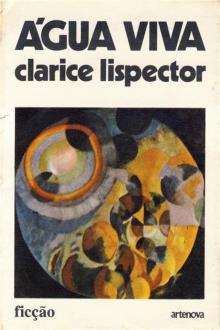 The Stream of Life
The Stream of Life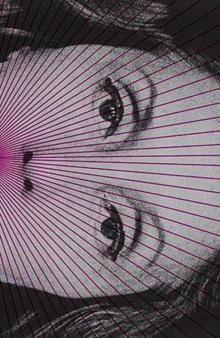 The Complete Stories
The Complete Stories The Hour of the Star
The Hour of the Star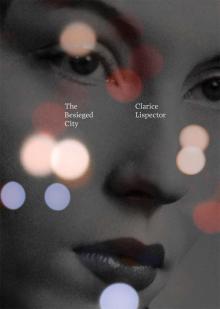 The Besieged City
The Besieged City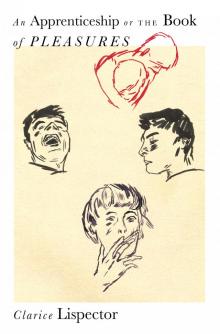 An Apprenticeship or the Book of Pleasures
An Apprenticeship or the Book of Pleasures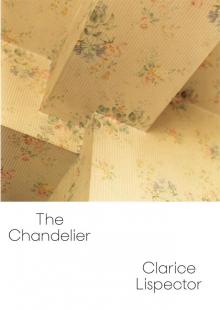 The Chandelier
The Chandelier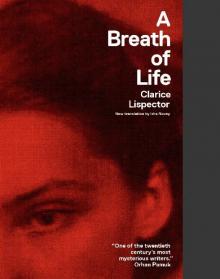 A Breath of Life
A Breath of Life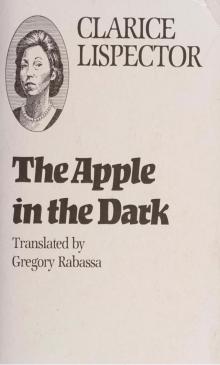 The Apple in the Dark
The Apple in the Dark Agua Viva
Agua Viva Complete Stories
Complete Stories Near to the Wild Heart
Near to the Wild Heart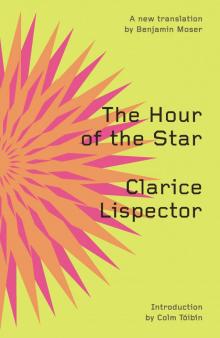 The Hour of the Star ()
The Hour of the Star ()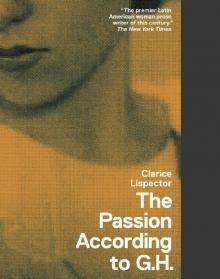 The Passion According to G.H.
The Passion According to G.H.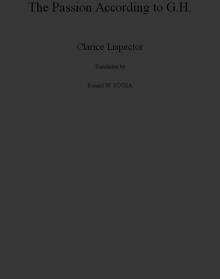 The Passion According to GH
The Passion According to GH